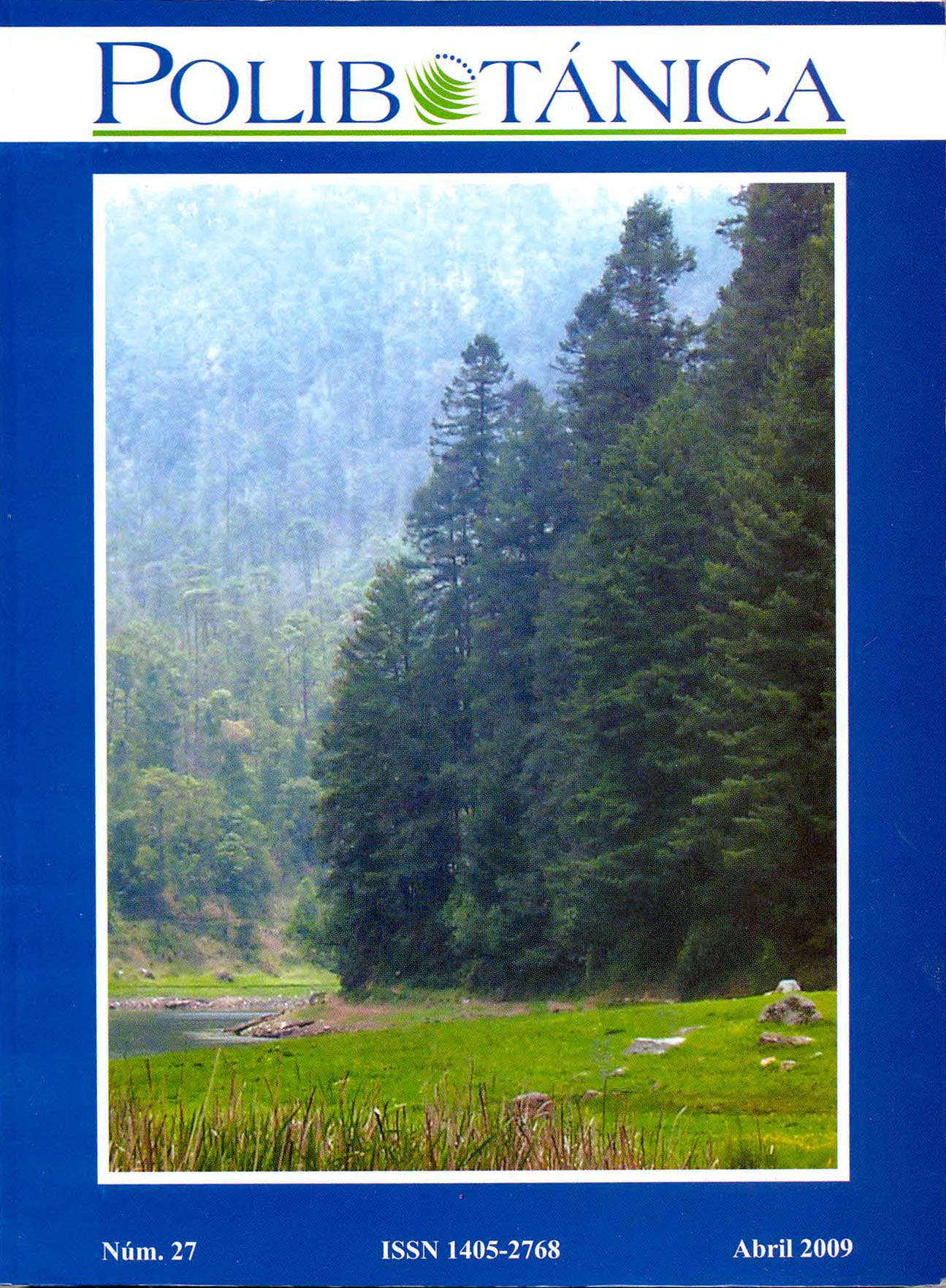SMALL-SCALE ENVIRONMENTAL GRADIENTS IN A PINE-OAK FOREST COMMUNITY IN NUEVA COLONIA, MEZQUITIC, JALISCO, MEXICO
Abstract
We explored environmental variables related
to pine-oak forest community structure at
one locality in Jalisco, Mexico. We used
an NMS ordination in conjunction with
the Sørensen distance to identify the major
small-scale community gradients along 25
contiguous quadrats (25 m x 25 m, 400 m2
each) of pine-oak forest in Nueva Colonia,
Mezquitic, Jalisco, Mexico. The main matrix
(25 stands x 7 tree species) included basal
area data, and the environmental matrix
consisted of 19 quantitative environmental
variables. Community structure, through
sociological ordination, showed a direct correlation with the vertical altitudinal gradient
and apparent soil density, as well as with slope inclination across the horizontal gradient;
it also showed an inverse correlation with
cation exchange capacity, Ca + Mg, Mg, and
altitude across the horizontal gradient. Direct gradient analyses showed an increase of
cation exchange capacity, Ca+Mg, Mg and
K with decreasing altitude along the vertical
gradient (from north to south). Total nitrogen
increased with decreasing altitude across the
horizontal gradient (from west to east). In
addition, we identified three main community groups using UPGMA cluster analysis;
however, groups were weakly related to the
ordination results and to the physical space.
At the 1-hectare scale, species composition
and basal area of pine-oak forest in Nueva
Colonia can be explained by niche partitioning of altitude and soil gradients. The
relevance of nitrogen for this community
could be the result of habitat specialization
or disturbance history.
Downloads
Published
Issue
Section
License

Polibotánica by Departamento de Botánica de la Escuela Nacional de Ciencias Biológicas del Instituto Politécnico Nacional se distribuye bajo una Licencia Creative Commons Atribución-NoComercial-CompartirIgual 4.0 Internacional.




















